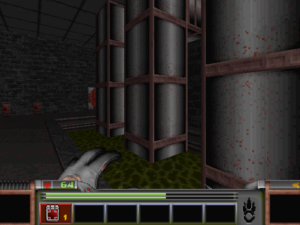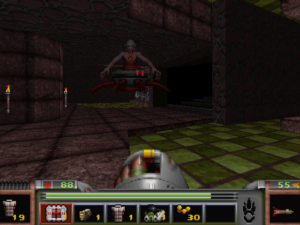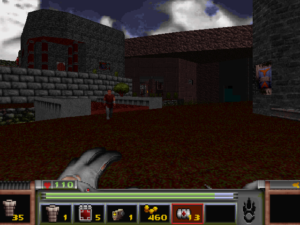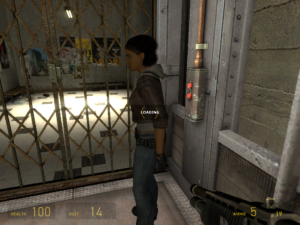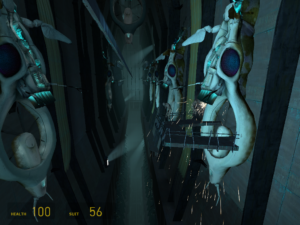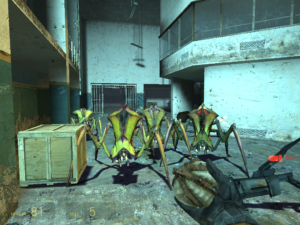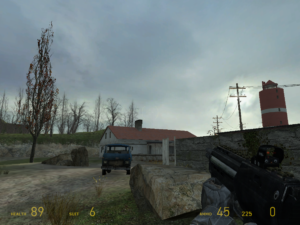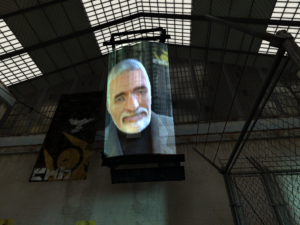Strife: After the Programmer
With the defeat of the Programmer (is that like the Death of the Author?), I obtained the device he was using to call down those nasty lightning bolts, like Megaman wresting new attacks from his fallen foes. It drains my health when I use it, so I’m not sure whether it’s ever actually worth using — perhaps if I found myself short on ammo and long on healing items. I can only assume that the Programmer had it rigged so that when he used it, it drained someone else’s health instead.
And with this, the game’s overarching goals appear, and start to give the game a structure. It seems this device is just one piece of a five-part megaweapon called the Sigil. Macil, the rebel leader, has tasked me with finding the other pieces, supposedly to keep them out of the Order’s hands. Thing is, putting them in the rebels’ hands might not be much better. Talking to Macil and his troops (the Front, as they call themselves), it’s pretty clear that getting rid of the Order is just phase one of his master plan for world domination. They’ve already gone and moved their headquarters into the castle we just stormed, and are all set to lord it over the commoners like its last occupants. There are supposedly three endings to the game, so I assume that I’ll be called upon to make a decision about what happens to the Front at some point.
Now, even though this is the point at which the overplot kicks off, I’m also noticing the game becoming more and more FPS-ish. The first several missions were rather amenable to combat-light play, with lots of avoidable alarms and guards you could simply outrun rather than engage, and they were relatively short, which meant I returned to the hub to interact with NPCs, shop for equipment, and otherwise engage in non-Doom-like behavior fairly frequently. Now that the missions are longer and the enemies are tougher and more numerous, it all feels much more like a traditional FPS, and that’s affecting how I play. In an RPG-like environment, you typically don’t have the option of pursuing every opportunity: everything you decide means something decided against. So as long as the gameplay felt more or less like a RPG, I didn’t feel like I had to explore every avenue, kill every monster, find every secret. (There aren’t a lot of secrets in the game that are officially counted as such, but there are a lot of hidden caches of equipment.) But once it feels more like a FPS, my sense of completism takes hold. There’s a cave you go through that has two paths through it, one guarded by lots of enemies, the other involving tricky jumps on small platforms. Even when I had finished what I had come to the cave to do, I had to go back and try the other route.
 Comments(1)
Comments(1)